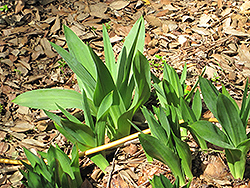Fri & Sat 8am - 8pm
Sun 8am - 7pm
Anytown, USA 12345
fax: 261.787.0463
e-mail: info@successgc.com


Plant Finder

Plant Height: 24 inches
Flower Height: 4 feet
Spread: 24 inches
Sunlight:
![]()
![]()
Hardiness Zone: 9a
Other Names: syn. Scilla maritima, Urginea maritima
Description:
A large bulb that is often partially above ground, producing strap shaped blue-green leaves in late fall that persist into the following summer; tall spikes of white flowers with golden centers emerge after the leaves diminish; drought tolerant
Ornamental Features
Sea Squill features showy spikes of white star-shaped flowers with gold eyes rising above the foliage from late summer to mid fall. Its narrow leaves remain green in color throughout the season. The burgundy stems can be quite attractive.
Landscape Attributes
Sea Squill is an herbaceous perennial with a rigidly upright and towering form. Its medium texture blends into the garden, but can always be balanced by a couple of finer or coarser plants for an effective composition.
This is a relatively low maintenance plant, and should be cut back in late fall in preparation for winter. It is a good choice for attracting bees, butterflies and hummingbirds to your yard, but is not particularly attractive to deer who tend to leave it alone in favor of tastier treats. It has no significant negative characteristics.
Sea Squill is recommended for the following landscape applications;
- General Garden Use
- Naturalizing And Woodland Gardens
Planting & Growing
Sea Squill will grow to be about 24 inches tall at maturity extending to 4 feet tall with the flowers, with a spread of 24 inches. Its foliage tends to remain dense right to the ground, not requiring facer plants in front. It grows at a fast rate, and under ideal conditions can be expected to live for approximately 10 years. As an herbaceous perennial, this plant will usually die back to the crown each winter, and will regrow from the base each spring. Be careful not to disturb the crown in late winter when it may not be readily seen! As this plant tends to go dormant in summer, it is best interplanted with late-season bloomers to hide the dying foliage.
This plant does best in full sun to partial shade. It is very adaptable to both dry and moist growing conditions, but will not tolerate any standing water. It is considered to be drought-tolerant, and thus makes an ideal choice for a low-water garden or xeriscape application. It is not particular as to soil type or pH, and is able to handle environmental salt. It is somewhat tolerant of urban pollution. Consider applying a thick mulch around the root zone in winter to protect it in exposed locations or colder microclimates. This species is not originally from North America, and parts of it are known to be toxic to humans and animals, so care should be exercised in planting it around children and pets. It can be propagated by multiplication of the underground bulbs.
